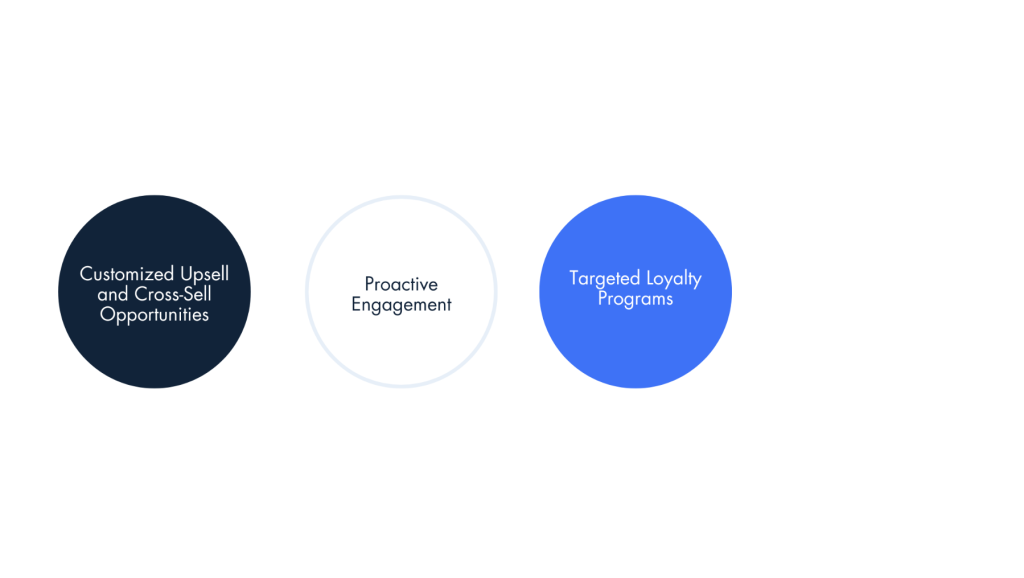Imagine knowing exactly what your customers want before they do—understanding their needs, preferences, and behaviors so well that you can craft marketing messages that speak directly to them. This isn’t a fantasy—it’s a reality that businesses can achieve by leveraging customer insights. With data at the heart of modern business, the ability to personalize marketing efforts based on deep customer understanding is a game-changer.
By integrating Dynamics 365 Customer Insights (Journeys) (previously known as Dynamics 365 Marketing) with Dynamics 365 Customer Insights (Data), businesses can consolidate customer data and unlock a comprehensive view. This allows for the development of more precise, tailored marketing strategies that exceed customer expectations. Let’s explore how using customer insights can transform your marketing efforts.
The Power of Customer Insights in Marketing
Customer insights refer to the data-driven understanding of customer behaviors, preferences, and interactions. This information allows businesses to anticipate customer needs, personalize communication, and create marketing strategies that resonate on a personal level. It goes without saying that having the ability to harness these insights is critical for staying ahead of competition.
Why Customer Insights Are Essential
- Personalized Marketing: Tailoring marketing messages based on customer preferences creates a deeper connection with the audience.
- Improved Targeting: Understanding who your customers are and what they need allows for more accurate segmentation and targeted campaigns.
- Data-Driven Decisions: Insights empower marketers to make informed decisions based on real-time data, optimizing campaigns for better results.
Integrating Dynamics 365 Marketing with Customer Insights
1. Unified Customer Data for a 360-Degree View
The integration of Dynamics 365 Marketing (Dynamics 365 Customer Insights (Journeys)) with Customer Insights (data) offers a 360-degree view of each customer by consolidating data from multiple touchpoints. This comprehensive data view includes everything from past purchases and website interactions to social media activity and email engagement.
How the 360-Degree View Benefits Marketing:
- Personalized Campaigns: With a full understanding of customer behaviors and preferences, marketers can create highly personalized campaigns that resonate with individual customers.
- Better Customer Segmentation: Customer data is segmented based on demographics, behaviors, and purchase patterns, enabling more focused and relevant messaging.
- Real-Time Insights: Marketers can react in real-time to customer actions, such as clicking on an email or visiting a product page, to deliver timely and relevant content.
2. Predictive Analytics for Anticipating Customer Needs
Customer Insights powered by AI and predictive analytics helps businesses forecast future customer behaviors based on past interactions. This capability allows marketers to anticipate what products or services customers might need next, and tailor campaigns accordingly.
Benefits of Predictive Analytics:
- Proactive Engagement: Marketers can engage with customers before they make a purchase decision, offering relevant recommendations or incentives.
- Improved Conversion Rates: Predictive analytics help target the right customers with the right message at the right time, increasing the likelihood of conversion.
- Efficient Resource Allocation: By identifying high-potential customers, businesses can allocate marketing resources more effectively, focusing on leads that are most likely to convert.
How Customer Insights Enable More Tailored Marketing Strategies
1. Enhanced Segmentation for Precision Targeting
One of the most powerful applications of Customer Insights (journeys) is its ability to enhance segmentation. By analyzing data from various sources, such as email engagement, website behavior, and social media interactions, marketers can segment their audience with a high level of precision.
Benefits of Enhanced Segmentation:
- More Relevant Campaigns: Instead of a one-size-fits-all approach, businesses can create campaigns that target specific customer segments with messaging that speaks directly to their needs.
- Higher Engagement Rates: Segmented campaigns are more likely to capture the attention of the audience, as they address specific pain points or interests.
- Increased ROI: With better targeting comes a higher return on investment, as marketing efforts are concentrated on segments most likely to engage and convert.
2. Personalization at Scale with Automation
Dynamics 365 Customer Insights (Journeys), businesses can automate personalized campaigns. This means that even large-scale marketing efforts can retain a personal touch, with messages tailored to individual customer preferences based on insights gathered.
Key Automation Features:
- Triggered Campaigns: Marketers can set up automated campaigns that are triggered by specific customer actions, such as browsing certain products, leaving items in a shopping cart, or responding to an email.
- Dynamic Content: Personalized content, such as product recommendations or tailored offers, can be dynamically inserted into emails or landing pages based on customer data.
- Behavioral Triggers: Automated marketing journeys can be created based on real-time customer behaviors, ensuring that customers receive relevant communications at the right moment.
Building Stronger Customer Relationships with Tailored Marketing
Tailored marketing doesn’t just improve engagement—it also strengthens the relationship between the brand and the customer. Customers today want to feel valued and understood, and marketing strategies that are personalized based on customer insights make this possible.
1. Creating Customer-Centric Campaigns
Customer-centric campaigns put the needs and preferences of the customer at the forefront. By using insights from Dynamics 365 Customer Insights (Data) and Journeys, marketers can craft messaging that speaks directly to the individual’s interests, making the brand experience more engaging and relevant.
Why Customer-Centricity Matters:
- Increased Customer Loyalty: When customers feel that a brand understands their needs, they are more likely to remain loyal and return for future purchases.
- Higher Satisfaction Levels: Personalized campaigns lead to higher satisfaction, as customers receive content, offers, and recommendations that truly resonate with their preferences.
- Long-Term Relationships: Building strong relationships based on tailored engagement ensures long-term customer loyalty, translating into sustained revenue growth.
2. Using Insights to Improve Customer Retention
Customer Insights (Data) not only help businesses acquire new customers but also play a vital role in retaining existing ones. By analyzing customer behavior and engagement, businesses can identify at-risk customers and take proactive measures to re-engage them.
Strategies for Using Insights to Boost Retention:
- Targeted Loyalty Programs: Using data on past purchases and behaviors, marketers can craft personalized loyalty programs that reward customers in ways that matter to them.
- Proactive Engagement: Insights allow businesses to identify when customers may be losing interest, enabling proactive engagement through special offers, reactivation campaigns, or personalized messages.
- Customized Upsell and Cross-Sell Opportunities: Marketers can use data to identify the best upsell and cross-sell opportunities, offering products or services that complement the customer’s previous purchases.

Measuring the Success of Marketing Strategies with Customer Insights
One of the key advantages of using Dynamics 365 Customer Insights (Journeys) integrated with Customer Insights (Data) is the ability to measure the success of marketing efforts in real time. This helps businesses continually refine and optimize their strategies.
1. Tracking Campaign Performance
Customer Insights (Journeys) provides detailed reports on how campaigns are performing, including open rates, click-through rates, conversions, and more. This real-time feedback allows marketers to adjust their strategies on the fly.
Benefits of Performance Tracking:
- Continuous Optimization: Real-time data enables marketers to adjust campaigns in real-time, improving their effectiveness.
- Data-Driven Decision Making: Insights from performance metrics provide the information needed to make strategic decisions about future marketing efforts.
- Improved Campaign ROI: By understanding what works and what doesn’t, businesses can refine their campaigns to maximize return on investment.
2. Customer Lifetime Value (CLV) Analysis
Understanding the lifetime value of a customer is crucial for long-term success. By analyzing CLV with Customer Insights (Data), businesses can identify which customers are the most valuable and tailor their marketing strategies to focus on retaining and nurturing these key individuals.
Why CLV Matters:
- Informed Resource Allocation: Knowing which customers have the highest lifetime value helps businesses focus their resources where they will have the greatest impact.
- Better Retention Strategies: By understanding the factors that drive high CLV, businesses can create strategies that foster long-term loyalty and repeat business.
- Increased Profitability: Retaining high-value customers ensures consistent revenue, reducing the need to constantly acquire new customers.
At Prodware, we provide you with the right tool to exceed customer expectations, foster stronger relationships and ensure long-term success.






